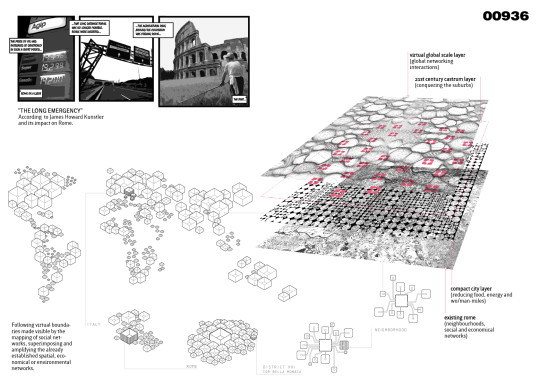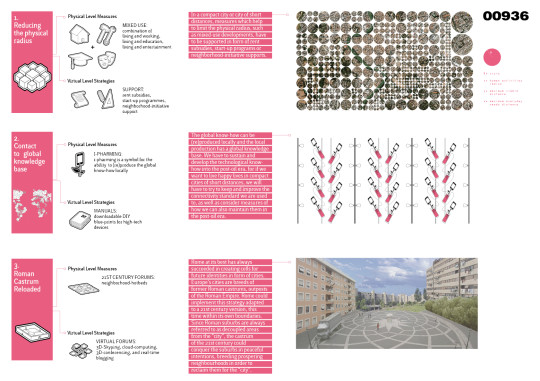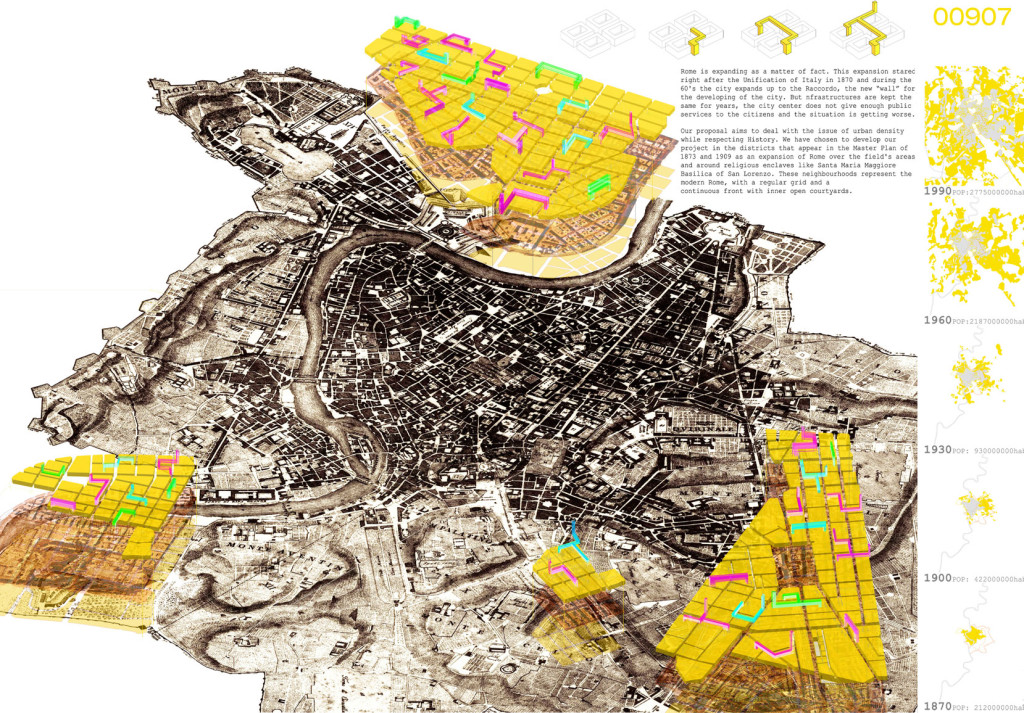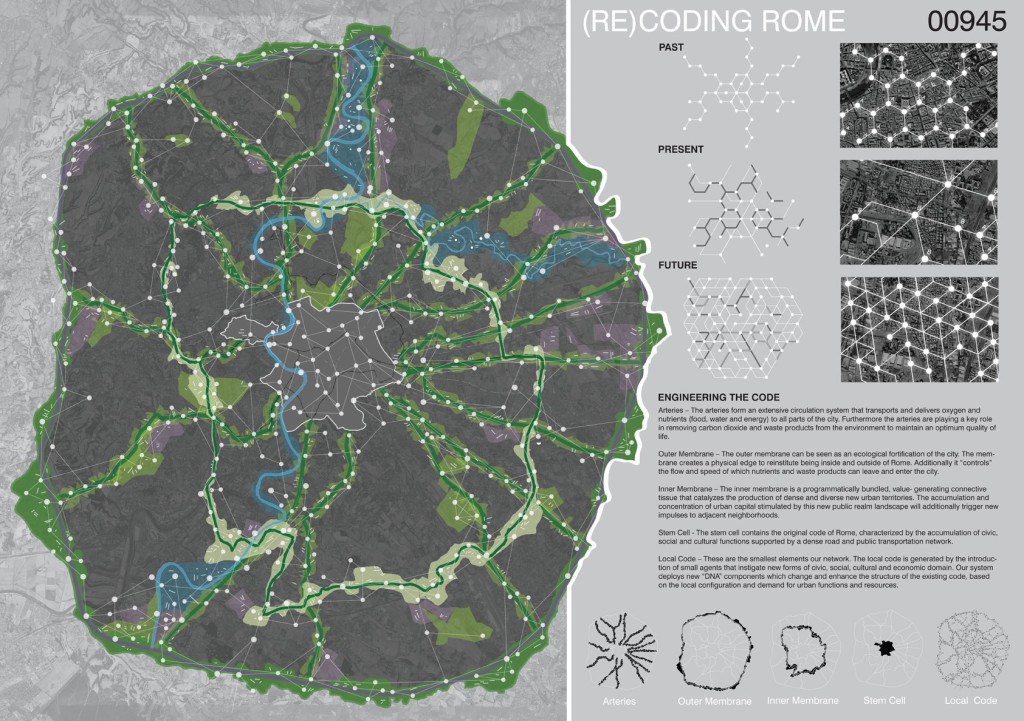Info:
Title: Clustrum Romanum - Code: 00936Contest: Rome / 2010
By: bad architects group – Ursula Faix / Paul Burgstaller / stadtlabor.org – Barbara Lanz & Martin Mutschlechner
Views: 5043 Likes: 1
Votes:
JUERGEN MAYER H. 0 FRANCESCO LIPARI4 FELIPE ESCUDERO3 FRANCESCO GATTI 7 MICHAEL CATON 84.4
Clustrum Romanum


Clustrum Romanum
Clustrum Romanum envisions Rome as a city which enables the (re)production of the global know-how locally and which has a local production referring to a global knowledge base. Such a vision of Rome will be shaped by virtual strategies like food, energy and wo/man-mile reduction subsidies. In addition, physical measures such as a 21st century adaption of the cell for the Roman Empire (the castrum) will this time conquer the suburbs with peaceful intentions and finally recuperate them for the city. Clustrum Romanum combines urban farming with technology breeding.
If we follow the scenarios of James Howard Kunstler we will find ourselves taken back to the medieval layout of a city, with its built center and agricultural ring of supply to the city, which is a scenario we do not favor. Therefore, we must take measures against this vision by improving the physical radius to an easily manageable scale and expand / keep the virtual radius to a global scale.
IMPROVING THE PHYSICAL RADIUS
On one hand, minimizing the time for commuting every day in a car / on a bicycle, bus, metro or tram on the way to work school or entertainment would greatly upgrade the quality of life already. Taking this into account, measures which help to limit the physical radius, i.e. mixed-use developments, have to be supported in form of rent subsidies, start-up programs or neighborhood-initiative supports on a virtual level.
IMPROVING THE GLOBAL NETWORKS
On the other hand, we have to sustain and develop the technological know-how into the post-oil era, trying to keep in place and also improve the connectivity standard we are used to, as well as thinking of measures how to develop them also in a post-oil world. 3D-Skyping, cloud-computing, 3D-video-conferencing and real-time blogging will become even more important in order to keep the convenience of being able to reference to a global knowledge-base.
We need to understand systems as responsive and accept sustainability as multi-faceted in order to not subscribe to one specific mindset, since technology can often be more sustainable than a green system (e.g. reducing food, energy and wo/man-miles allowed by).
INTERVENTION i-pharming
Sustainability lies not within urban farming or reducing food and energy-miles only, but also within a technology based society which can rely on a global knowledge-base and decrease physical travel by virtual interfaces. I-pharming is a is a symbol for technology breeding with the help of downloadable DIY-blue-prints for high tech devices.
INTERVENTIONS
Not merely physical interventions, but virtual as well. It becomes a mixture of low tech and high tech, where the concept of distance is decreased and the center is brought to everyone. Most importantly, the focus now becomes how the social and technological aspect is integral for establishing contact to work within system, preserving personal connection via digital methods.
INTERVENTION Roman Castrum Re-Loaded
According to Friedmann the world is flat. According to Jeff Rubin the world is getting smaller. Given these two factors, Rome could anticipate this process by doing what it has always done best: creating cells for future identities in the form of cities. Many of central Europe’s cities, e.g. Vienna (Vindobona), Paris (Lutetita) or Köln (Colonia), are breeds of former Roman castrums, outposts of the Roman Empire. Rome could implement this strategy adapted into a 21st century version, this time within its own boundaries. Since Roman suburbs are always referred to as detached and decoupled areas from the “city”, as sort of blind spaces, the castrum of the 21st century could conquer the suburbs in peaceful intentions, breeding prospering neighborhoods in order to reclaim them for the “city”.






